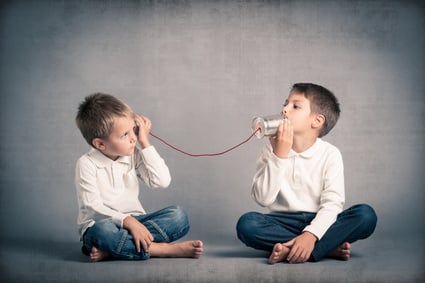The marketing landscape has seen some big changes in the last year.
But both marketing agencies and clients need to understand C2C is here to stay, says Adrian Cory, Business Development Manager for the Clay Group
It appears ‘communications agency’ is a common misnomer these days.
Somewhat puzzling given the designation of a communications agency appears relatively straightforward: an organisation that offers valued clients the best possible routes to reach out, connect with an audience and begin (or continue) meaningful and long lasting relationships. Sounds simple enough, but the reality is a little different. The way we communicate has undergone the most radical change since a man named Bell asked a man named Watson to pop in and many brands still haven’t adapted despite the over-bearing attentions of ‘experienced’ communications agencies.

A brief history of the marketing agency: Where we were
Communication used to be business led. Brands and corporations would set the agenda and lead the debate around features, benefits and calls to action. It mattered not who was on the receiving end of the conversation, brands were calling the shots. But suddenly, that’s all gone. The digital age has shifted the paradigm and communication is now a channel between equals; person to person; C2C.
Where we are now
Gone too are the days when consumers would willingly ingest anything brands threw at them. Instead, it’s the people who hold the power now and brands have to convince them they are worth listening to and that they are worthy of their loyalty. An increasingly difficult task: marketing teams have to put themselves in the shoes of their audience. Consumer2Consumer (C2C) communication demands that brands are relevant, creative and continually answering the question, ‘what are you doing for me?’.
Effective dialogue (that is, communication which delivers ROI) has to deliver intrinsic value for both parties. Marketing agencies and communications agencies should provide the core insights which valuable dialogue can be built around. If your message doesn’t appear to be getting through, then it’s time to stop and evaluate what’s missing (or get a new communications agency). The likelihood is that your message is horribly one-sided; you are t at your audience, rather than with them.
Example #1 of the power of C2C: Netflix
When TV and film streaming service Netflix, hiked its prices last year in the US, rather than talk directly and openly with customers, Netflix CEO’s took the staggering tact to bemoan a lack of profits which was forcing the company’s hand. This ill-advised piece of corporate communication cost Netflix a significant fall in subscribers, revenue and a 60% whack on its NYSE shares.
Consumer dialogue is part art, part science. Brands need to develop authentic conversations with their audiences: credibility drives connectivity. And with so many touchpoints available in the marketing mix the challenge is to maintain a creative consistency across each platform. Deviate from a central proposition too much or too frequently and the conversation quickly becomes confused and inaccessible (and will equally ramp up costs). Not only does C2C need to be effective, it also needs to be efficient. The metrics around a communication strategy needs to live pre-campaign so the activity can be gauged and reappraised as the plan develops.
Example #1 of the power of C2C: UPS
When UPS launched their “We Love Logistics” campaign, they used a web-enabled dashboard which supplied some 300 metrics from over 80 data sources covering every platform used in the campaign. This allowed UPS to analyze the sequence of events from a customer’s exposure to the campaign to their subsequent willingness to accept a call from the sales team. The courier company was then able to tweak the parameters of the event accordingly. Eight months in, and the campaign had delivered over 20% of all incremental revenue.
A round up
Just to be clear, C2C isn’t exclusively focused on social media; dialogue parity has to evolve seamlessly across all selected media channels. Brands, and their partner agencies, are simply in denial if they believe they can connect with the modern consumer with outmoded views on how to converse with them. Brands must demonstrate they have the ability to engage in valuable and authentic conversations with consumers: again, it’s simple, adapt or die.
Consumers manage to talk to one another this way, so why don’t brands?








